
Discover all the products in the line
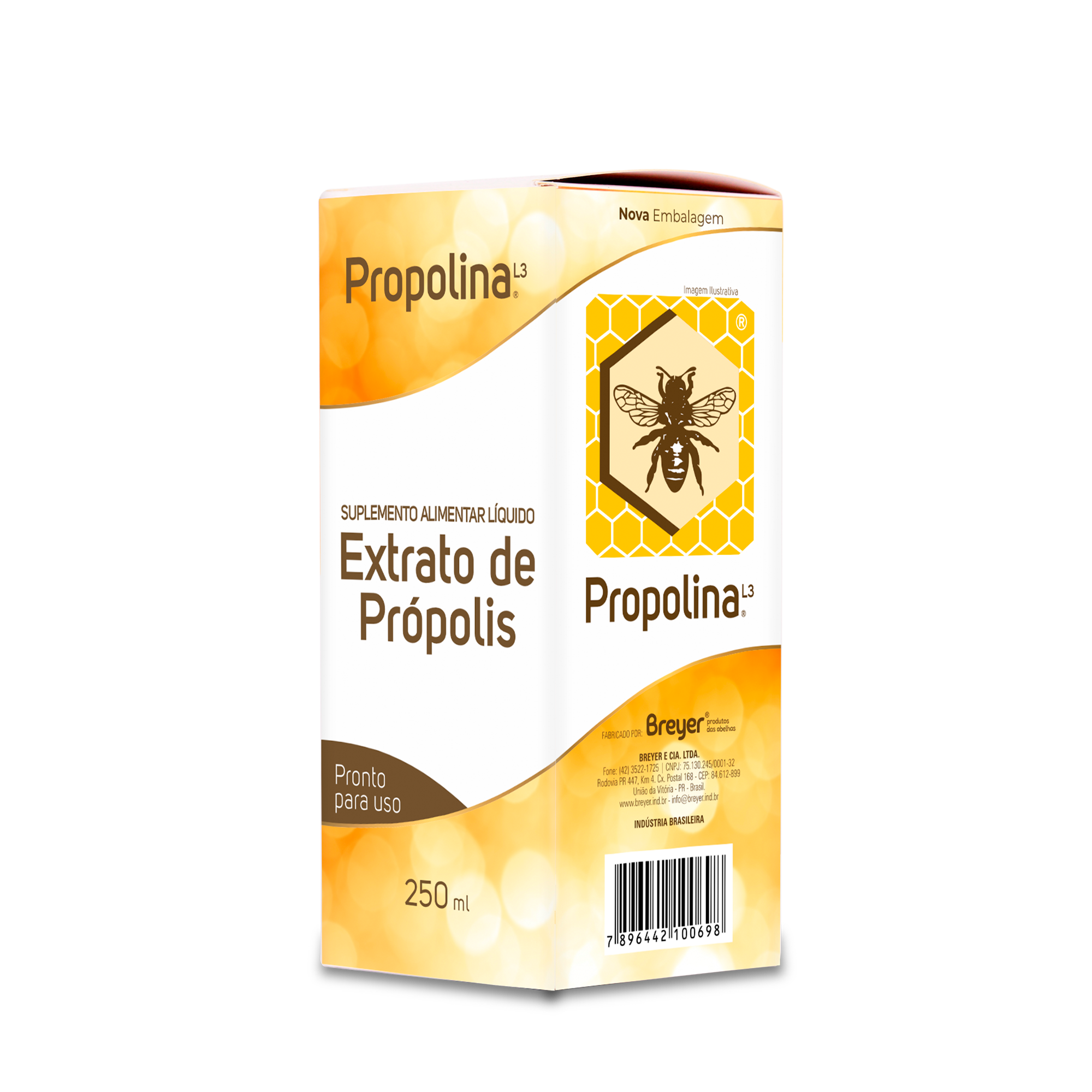
Propolina L3 Organic is made with propolis produced in Araucaria Forest regions. This diversity results in a high-quality product. It is convenient and easy to use, as it is ready for consumption.
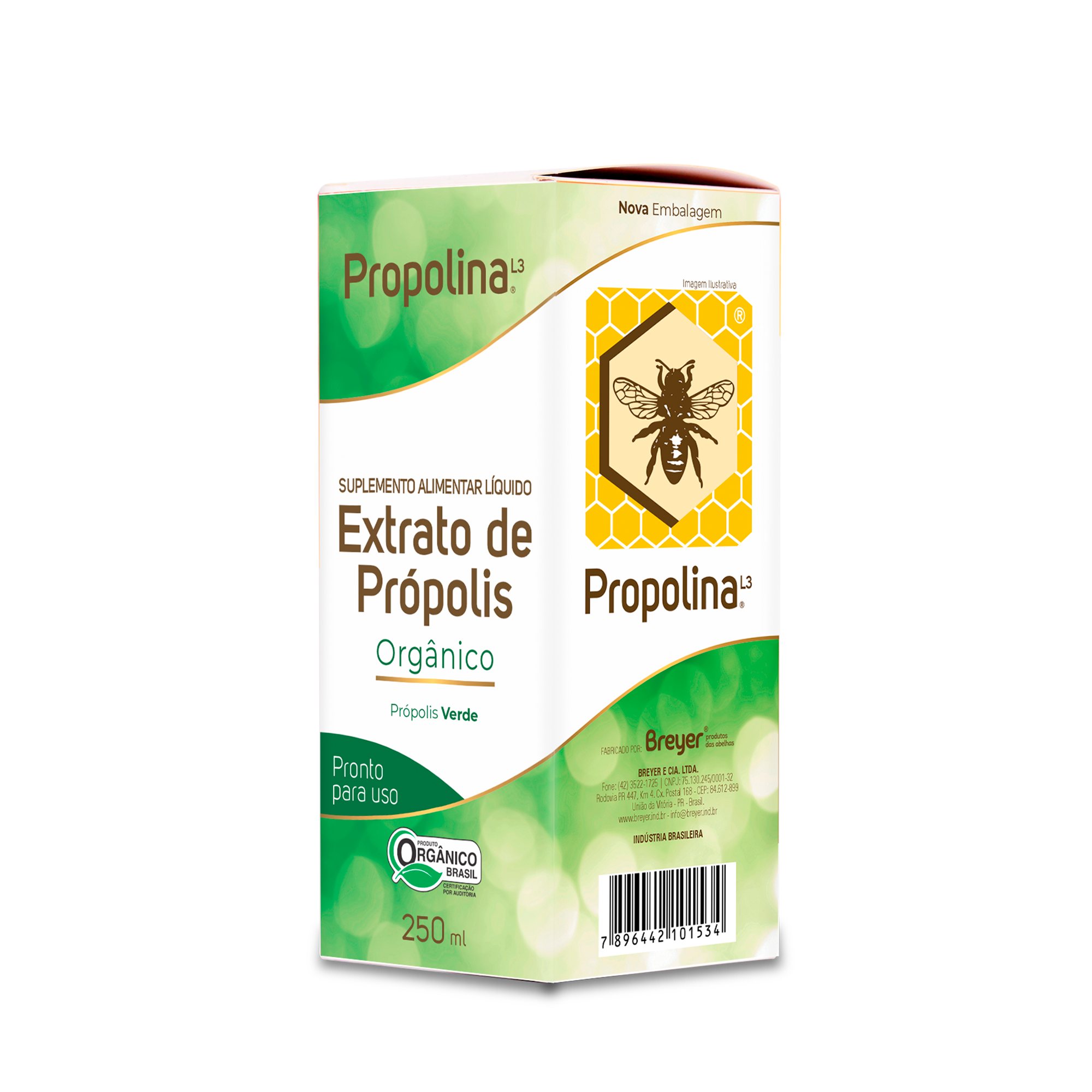
Propolina L3 Organic is produced from Green Propolis, which stands out in various studies for the presence of bioactive substances such as Artepelin C (3,5-diprenyl-p-coumaric acid), bacarin, and p-coumaric acid. Propolina L3 is made with green propolis, produced in regions where the Alecrim do Campo (Baccharis dracunculifolia) predominates.
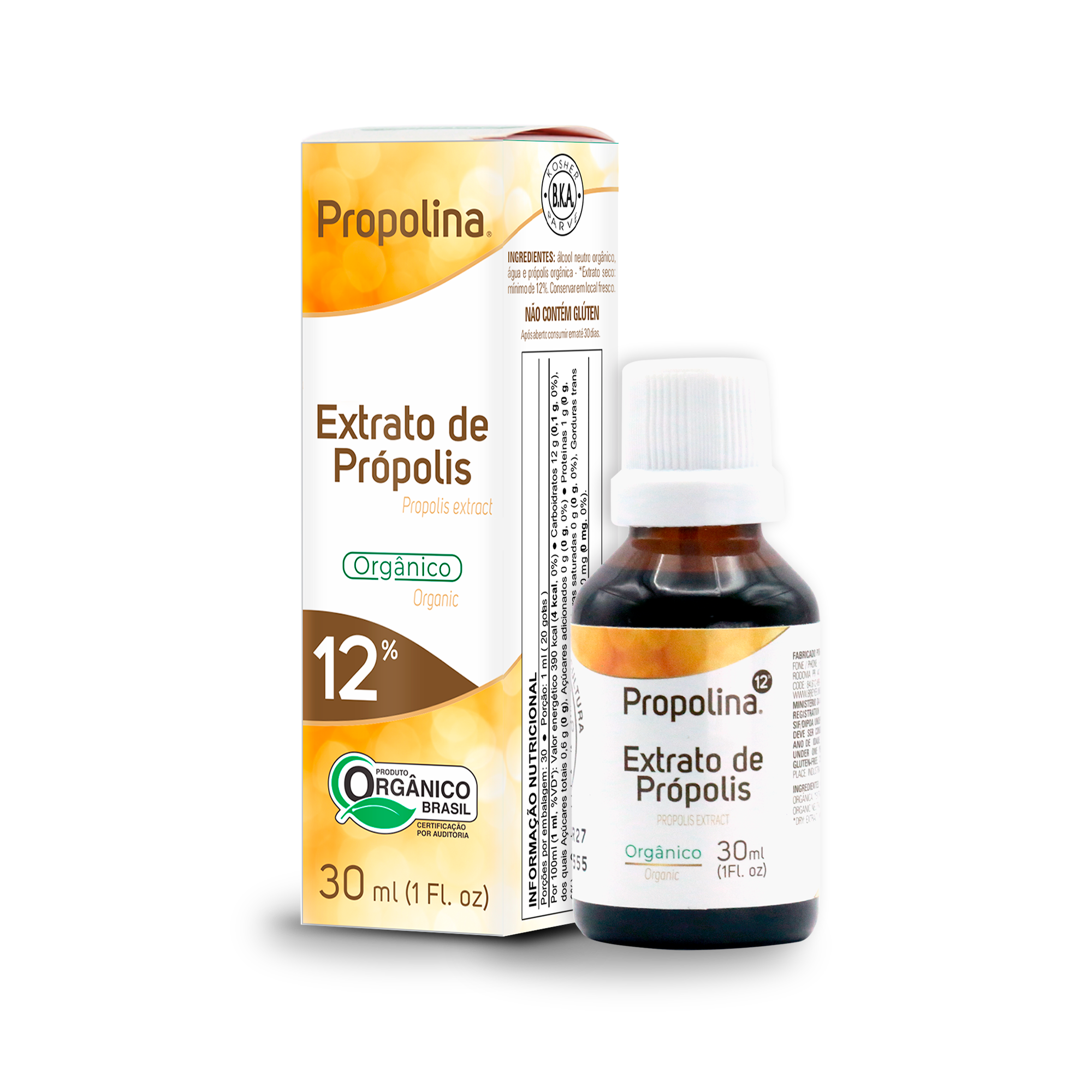
Propolina 12% Organic consists of propolis extract with 12% natural Propolis. It can be diluted in water, juices and teas.
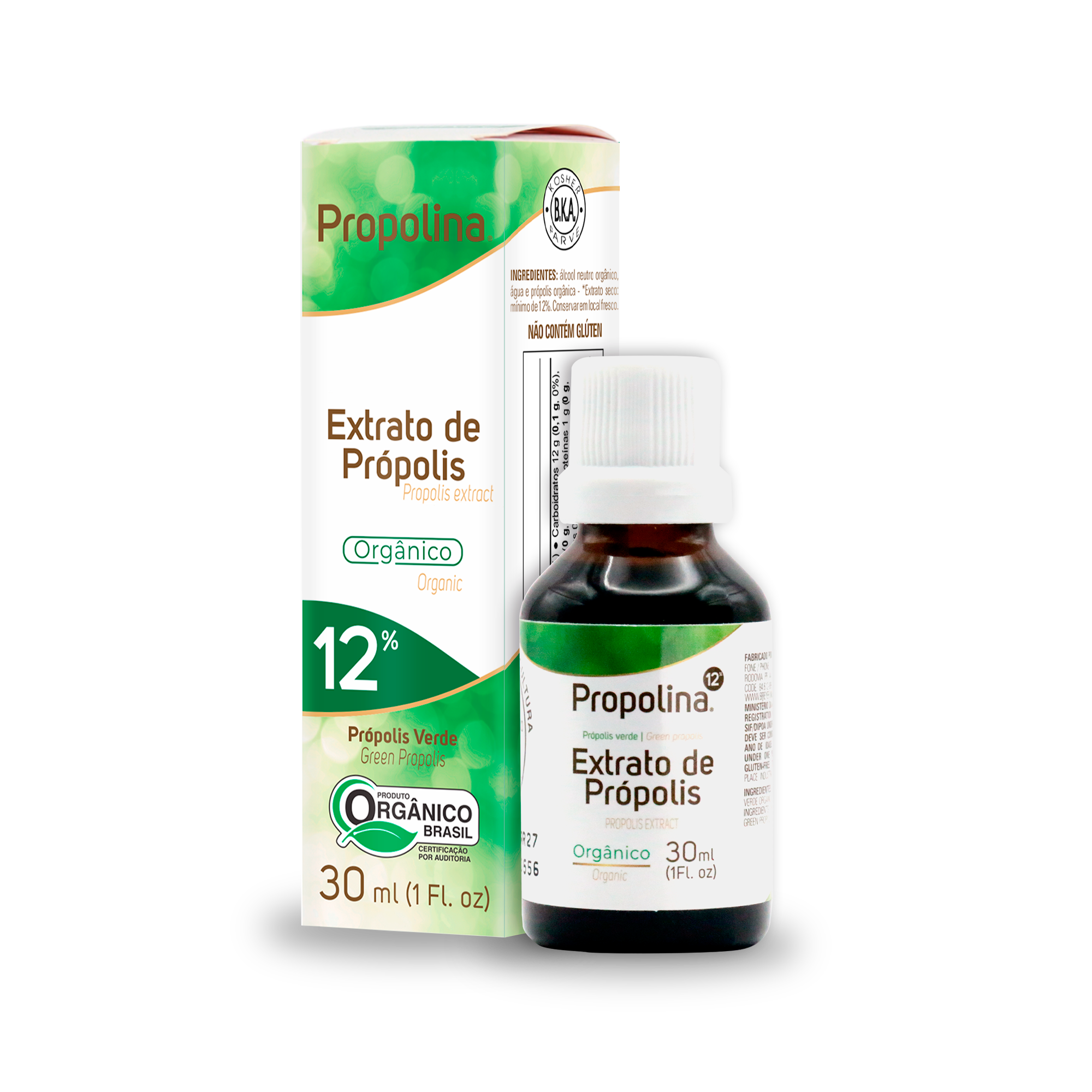
Propolina 12% is produced from Green Propolis, which stands out in various studies for the presence of bioactive substances such as Artepelin C (3,5-diprenyl-p-coumaric acid), bacarin, and p-coumaric acid.
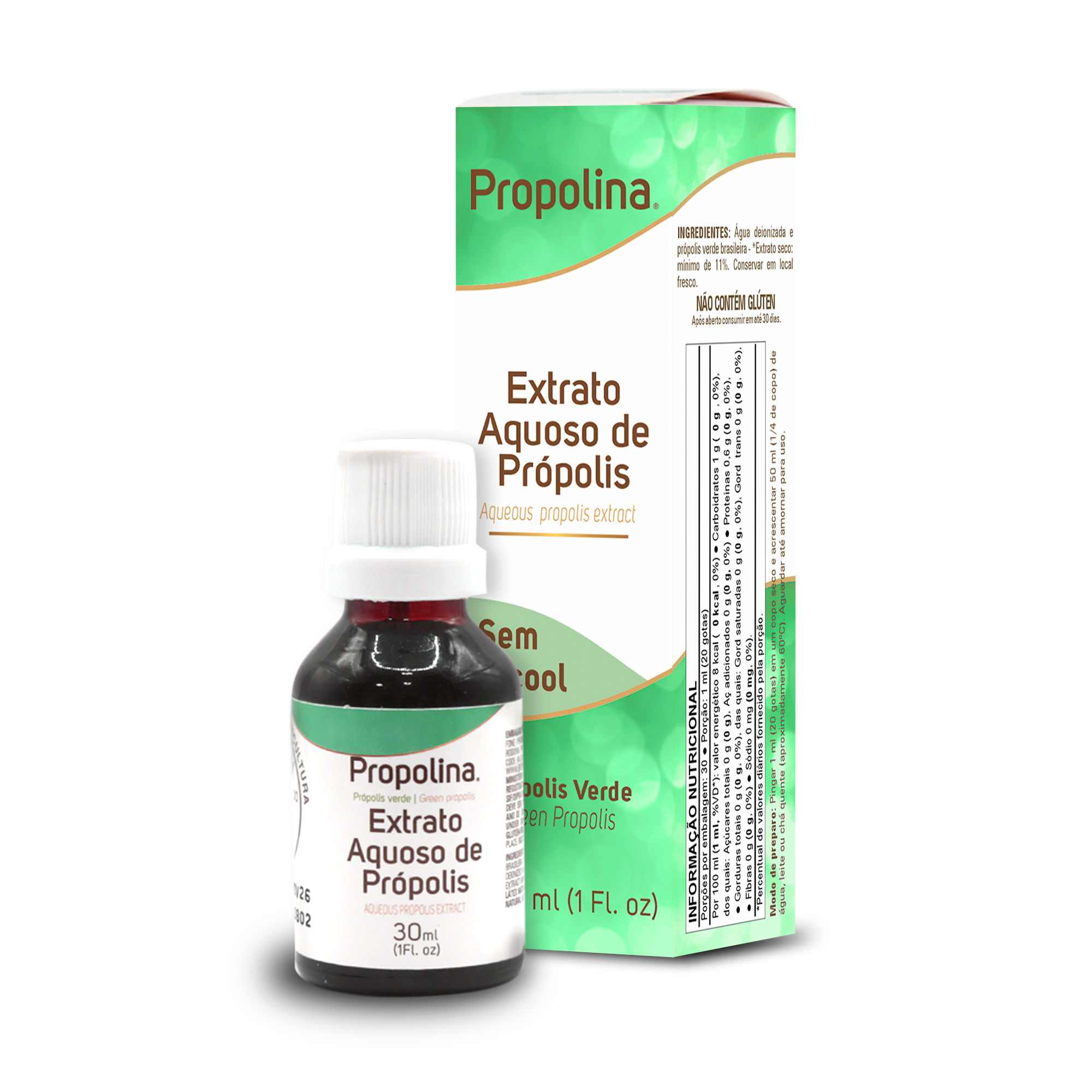
Propolina 11% – Aqueous Green Propolis Extract – 30ml: An alcohol-free option, ideal for the whole family.

It was the first propolis-based product created by Breyer. Propolina L3 is made with propolis produced in Araucaria Forest regions, where Alecrim do Campo (Baccharis dracunculifolia) predominates. This diversity results in a high-quality product. It is practical and easy to use, as it is ready for consumption.
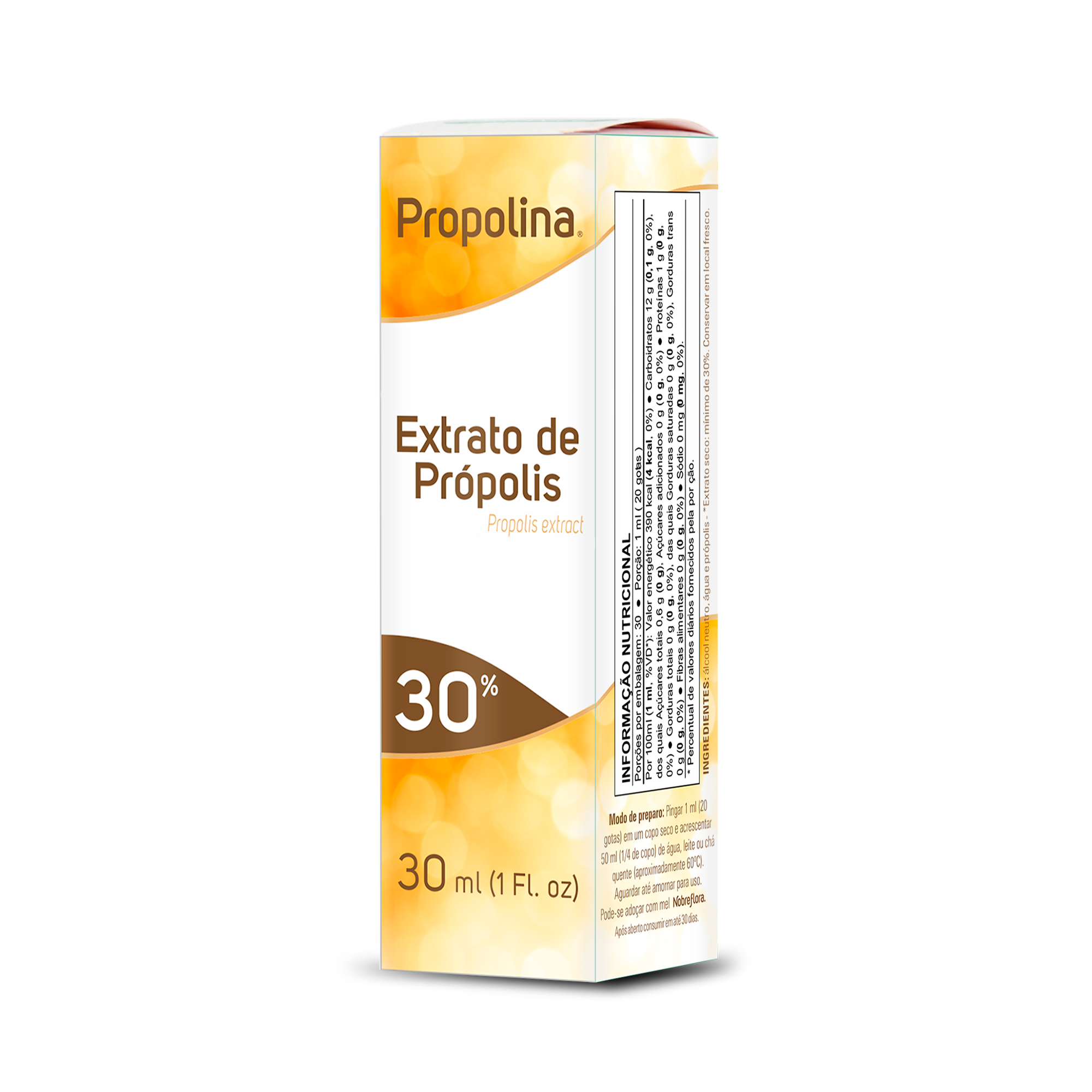
The 30% Propolis Extract is made with propolis. It is an alcoholic extract and the most concentrated product in Breyer’s propolis extract line, made with the equivalent of 30% raw propolis.
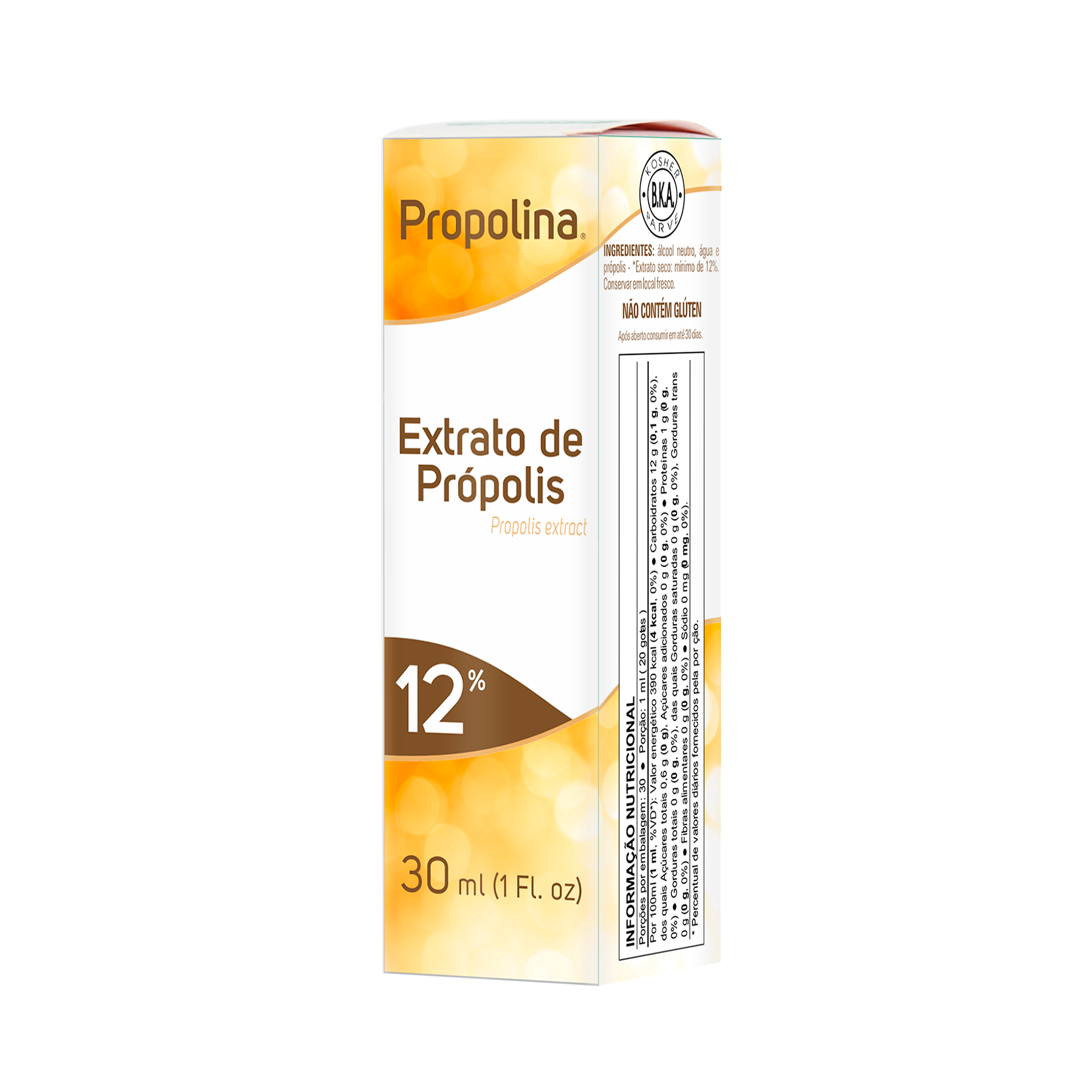
Propolina 12% is made with propolis produced in Araucaria Forest regions, where Alecrim do Campo (Baccharis dracunculifolia) predominates. This diversity results in a high-quality product.
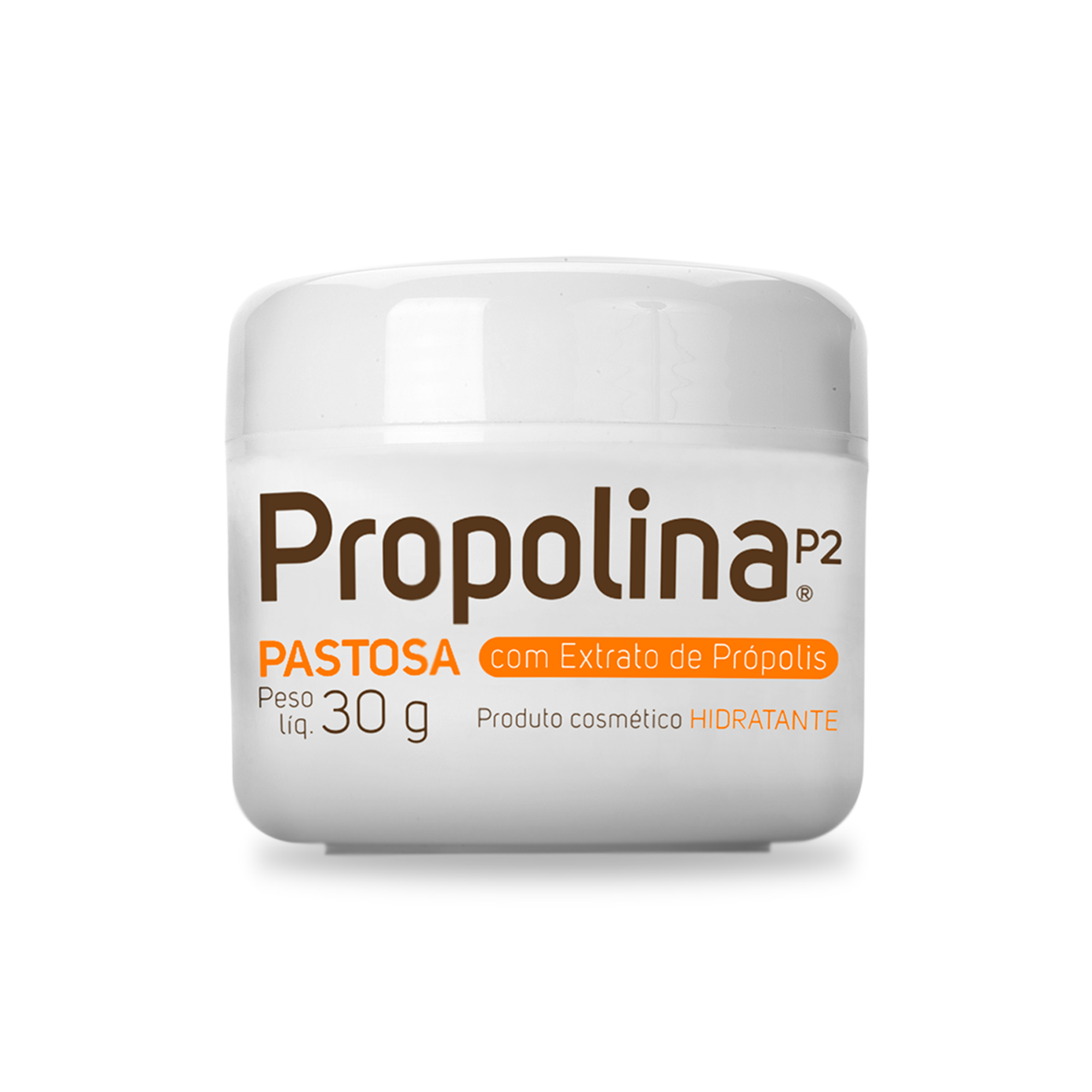
Propolina P2 Ointment, a paste with green propolis extract, contains phenolic compounds, giving the product significant anti-inflammatory and healing potential, as well as providing protection and hydration for your skin.
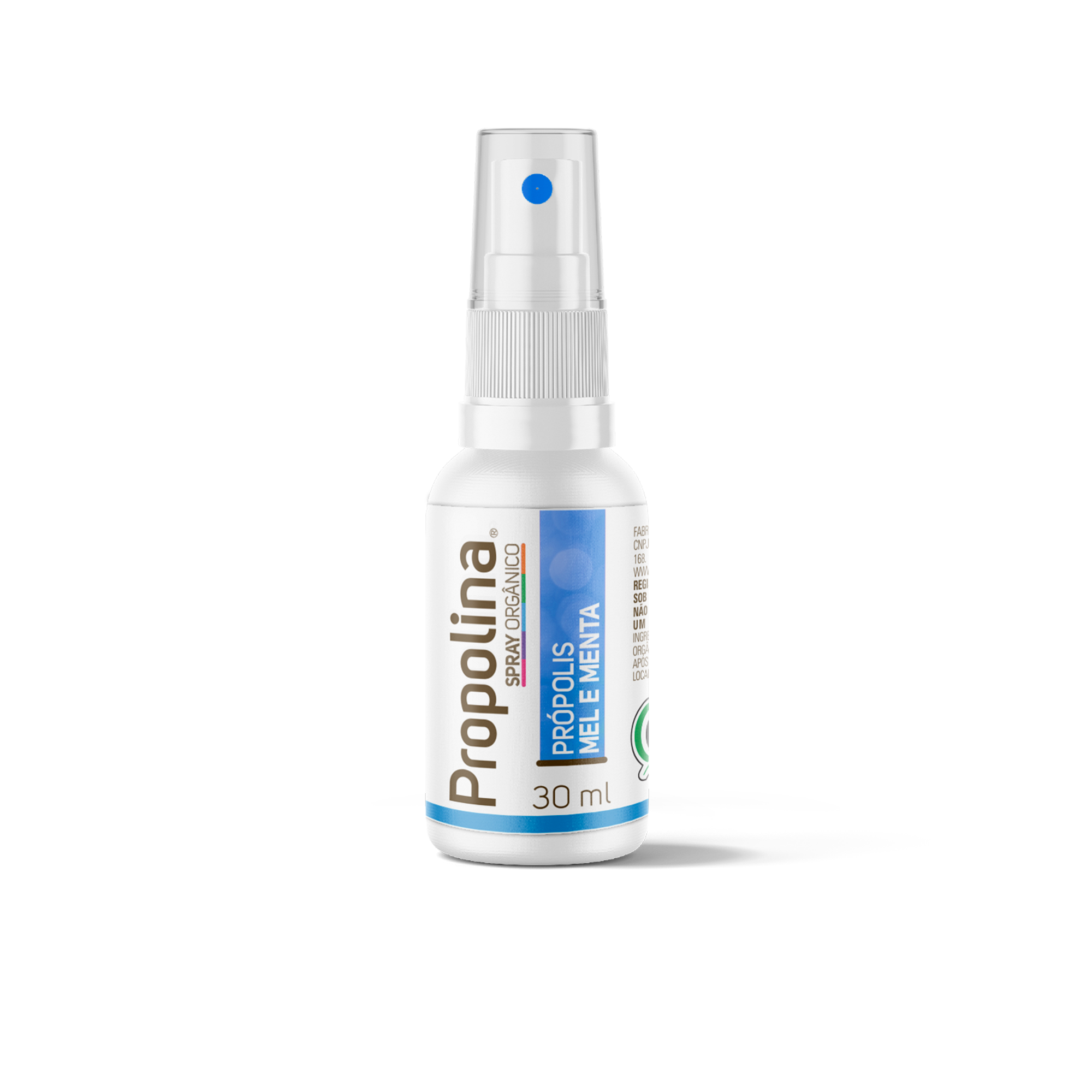
Mouth Freshener. A compound that combines the bioactive properties of honey and propolis extract, enhanced with the freshness of mint. It results in a high-quality and practical product for breath and throat care.
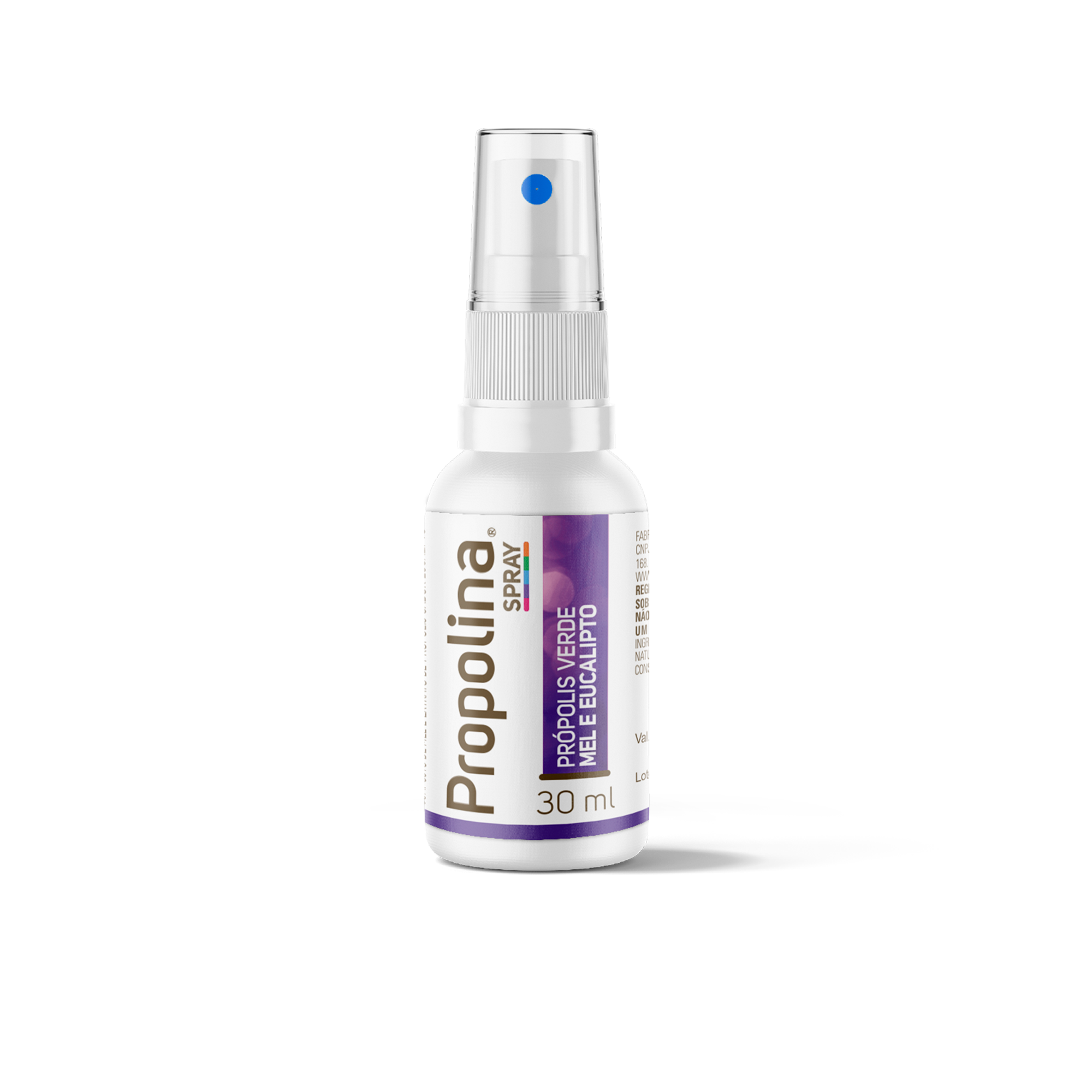
Mouth Freshener. A compound that combines the bioactive properties of honey and green propolis extract, enhanced with the flavor of eucalyptus. It results in a high-quality and practical product for breath and throat care.
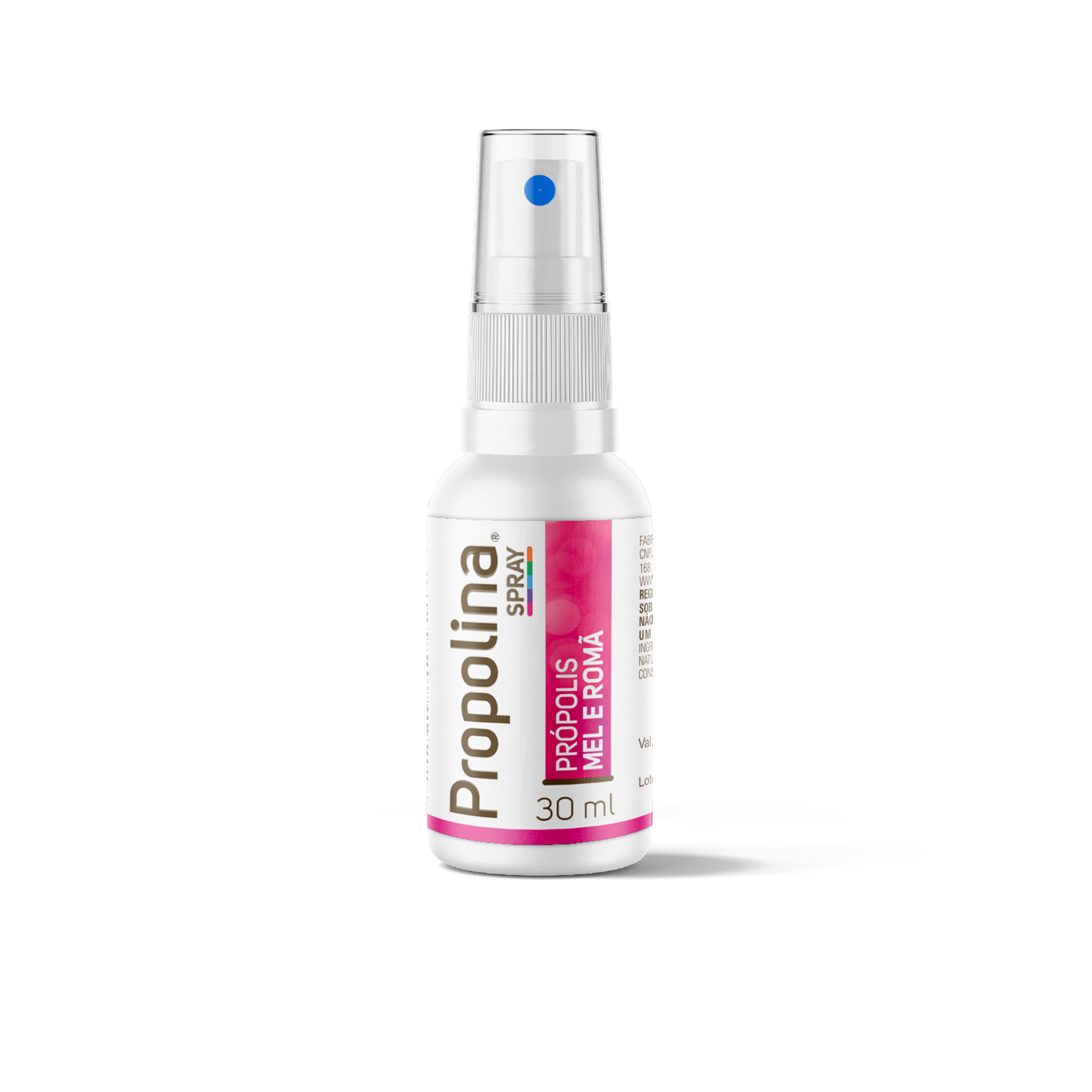
Mouth Freshener. A compound that combines the bioactive properties of honey and propolis extract, enhanced with the flavor of pomegranate. It results in a high-quality and practical product for breath and throat care.
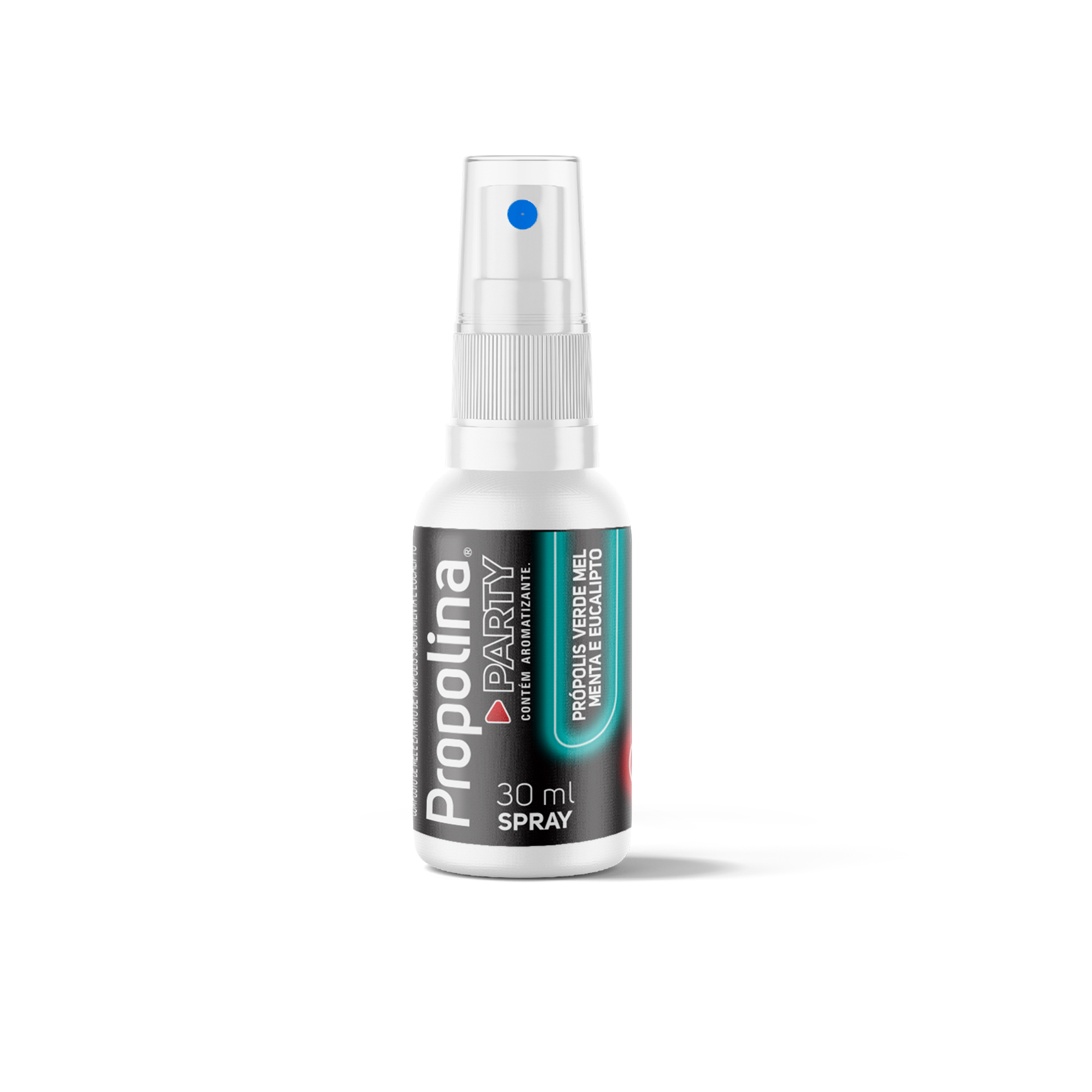
Mouth Freshener. A compound that combines the bioactive properties of honey and green propolis extract, enhanced with the flavors of mint and eucalyptus. It results in a high-quality and practical product for breath and throat care.
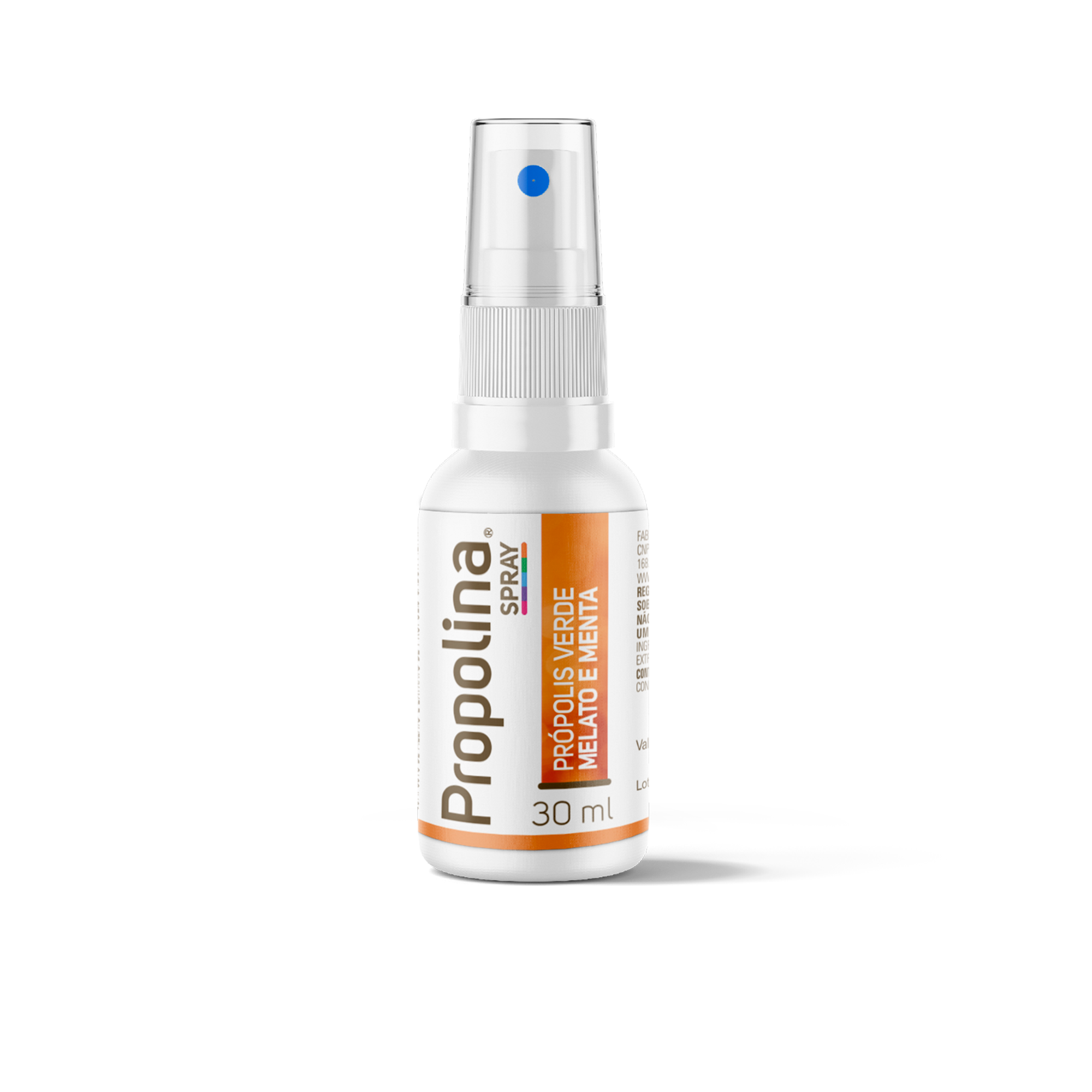
Mouth Freshener. A compound that combines the bioactive properties of melato honey and green propolis extract, enhanced with the flavor of mint. It results in a high-quality and practical product for breath and throat care.
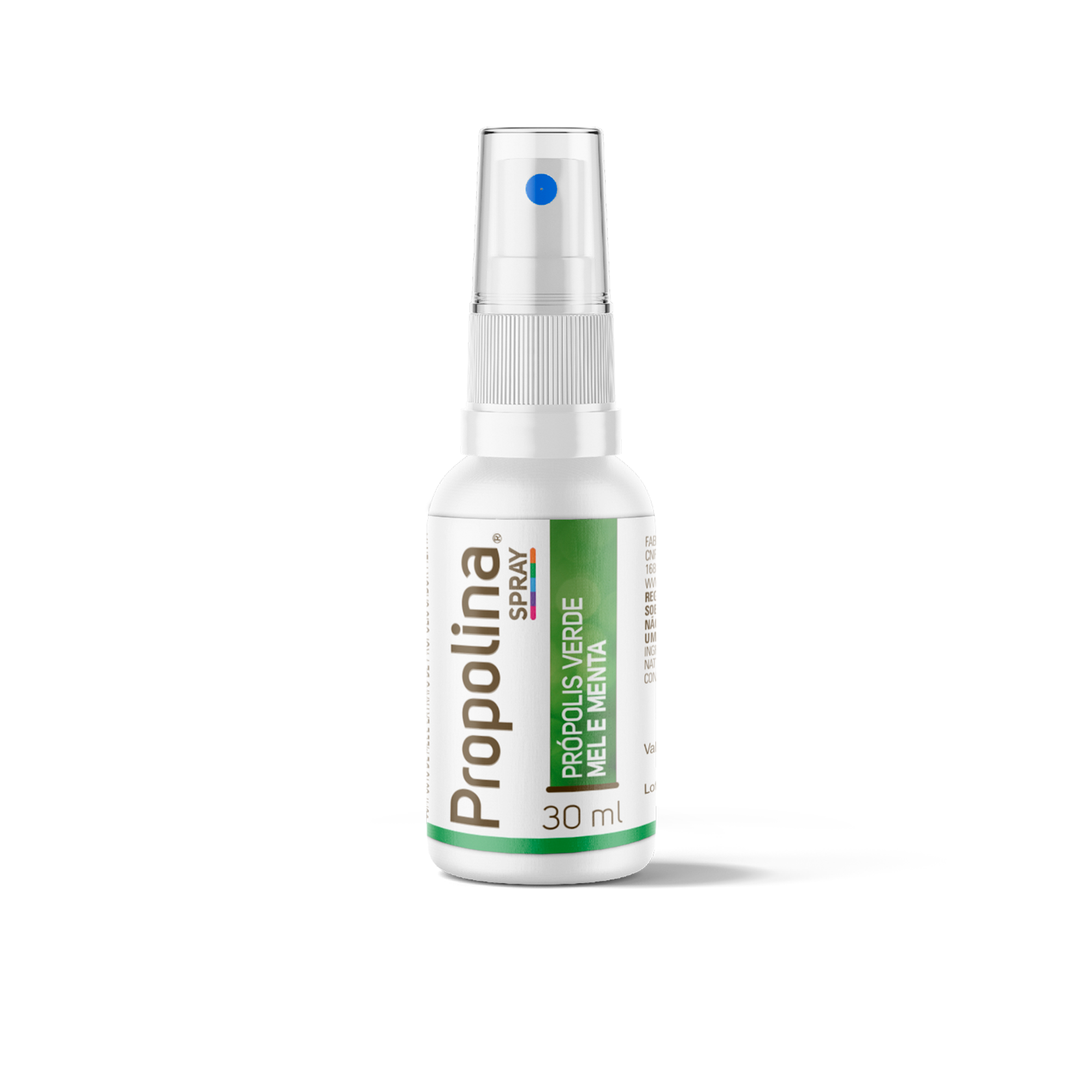
Mouth freshener. Compound that combines the bioactive properties of honey and green propolis extract, with the addition of mint flavor. It results in a product of excellent quality and practicality for your breath and throat.
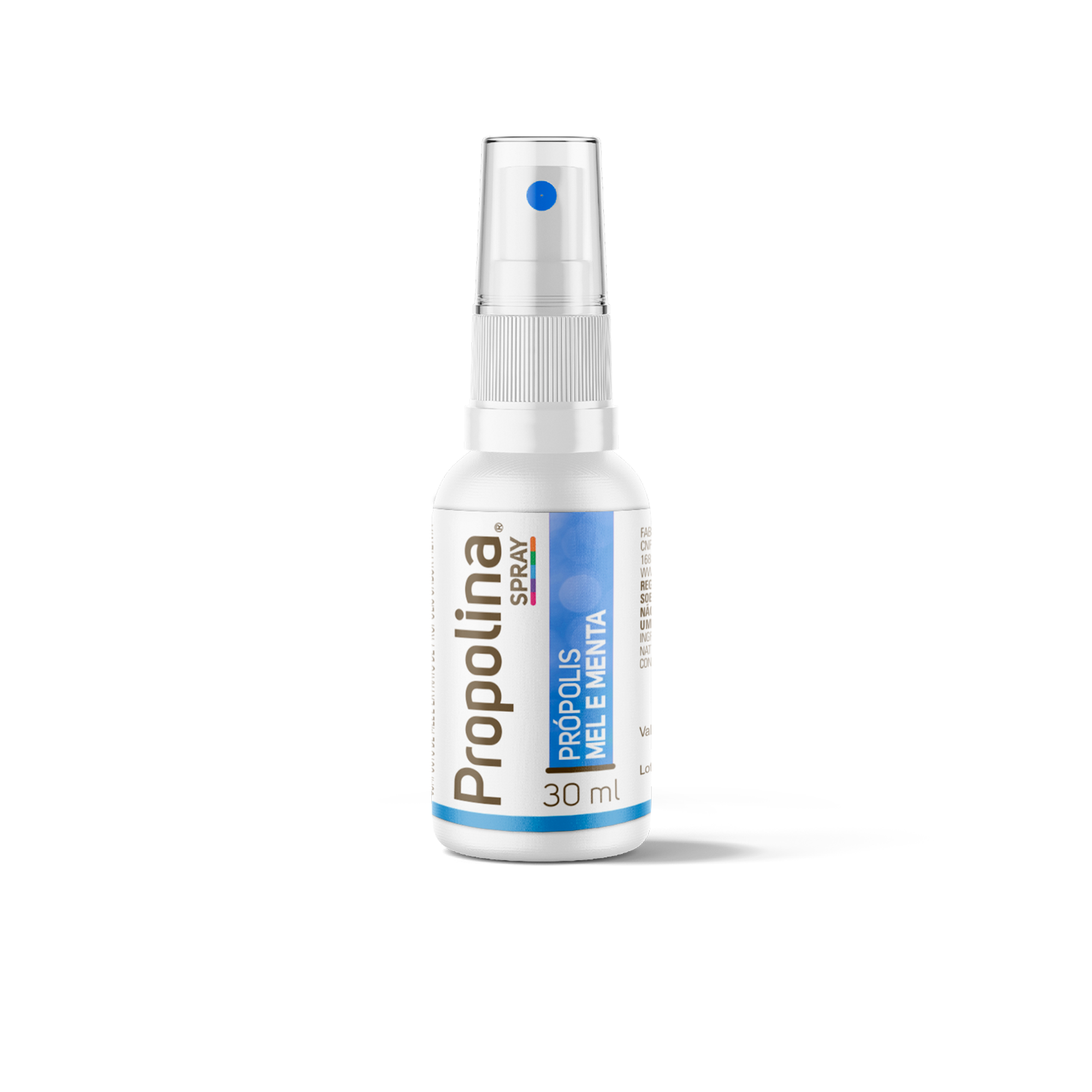
Mouth Freshener. A compound that combines the bioactive properties of honey and green propolis extract, enhanced with the flavor of mint. It results in a high-quality and practical product for breath and throat care.
The pursuit of well-being and a better quality of life has increasingly sparked interest in natural and healthy products among the population. For 40 years, the Propolina brand has been offering products specially crafted from brown and green propolis to provide health and well-being for your life.
Propolis is a complex mixture, made up of resinous and balsamic material, collected by worker bees from different parts of plants, such as buds, branches, floral buds and exudates, with the addition of salivary secretions, wax and pollen1,2. Bees use propolis mainly to protect their hives against other insects and microorganisms3,4.
The chemical composition of propolis is highly varied, closely related to its botanical origin. More than 300 components have been identified in propolis from different regions, including phenolic acids, flavonoids, esters, diterpenes, aromatic aldehydes, alcohols, amino acids, fatty acids, vitamins, and minerals. The main bioactive components of Brazilian propolis are phenolic acids, such as prenylated p-coumaric acid derivatives, diterpenic, caffeic, and ferulic acids.
In recent years, many scientific studies have been conducted worldwide, bringing significant findings about the high biological potential of propolis. Important biological activities are attributed to Brazilian propolis, with the main ones described in the literature being antibacterial, antiviral, antifungal, antiparasitic, antioxidant, immunomodulatory, anti-inflammatory, and anticariogenic.
Research describes green propolis as being rich in artepelin C (3,5-diprenyl-p-coumaric acid), a bioactive substance that, according to scientific studies, stimulates the immune system, helping inhibit the growth of tumor cells and increasing the number of lymphocytes in the body. Along with artepelin C, bacarin and p-coumaric acid stand out as important substances that have been associated with anticancer effects, particularly against breast and prostate cancer cell lines.
Propolis is a natural product that has a promising antioxidant potential, as it acts as a defense agent for the body against free radicals found in all organisms. The antioxidant activity is primarily due to the presence of phenolic compounds, which are widely found in propolis. These compounds act as protectors of the human body against excessive radicals, which are naturally produced during aerobic metabolism, initiating a process of oxidative stress. The excess of free radicals, from the ROS group (reactive oxygen species), triggers harmful effects on cells, such as cancer, neurodegenerative diseases, anemia, ischemia, and oxidation of low-density lipoproteins, the latter leading to cardiovascular problems. In a study conducted with organic propolis from southern Brazil, the authors reported high antioxidant activity in the alcoholic extracts analyzed. They identified not only antioxidants but also substances with antibacterial and anti-inflammatory activity in samples of certified organic Brazilian propolis.
Propolis can prevent tooth decay, as it has demonstrated significant antimicrobial activity against microorganisms such as Streptococcus mutans, Streptococcus sobrinus and Candida albicans, which involve oral diseases28. Recently, a study with red propolis showed promising antimicrobial properties, which may be useful in controlling periodontal diseases29.
Antifungal activity, with effect on planktonic cells of the genus Candida (C. albicans, C. tropicalis and C. parapsilosis) and prevention of the formation of biofilms and eradication of already mature biofilms30.
Research describes green propolis as being rich in artepelin C (3,5-diprenyl-p-coumaric acid), a bioactive substance, which according to scientific studies, stimulates the immune system, helping to inhibit the growth of tumor cells and increase the number of lymphocytes in the body. Along with artepilin C, bacarin and p-coumaric acid stand out, important substances which have been associated with anticancer effects, especially against breast and prostate cancer cell lines.21
The antimicrobial activity of propolis is complex and is primarily attributed to the synergy between its various potent biological components, mainly phenolic compounds and flavonoids. According to Bankova and collaborators, Brazilian propolis owes its antimicrobial actions to the presence of p-coumaric acids, prenylated compounds, and diterpenes. Strong antibacterial activity has been described for organic propolis, with effects against gram-positive bacteria such as: Streptococcus mutans, Streptococcus oralis, Streptococcus sobrinus, and Staphylococcus aureus, as well as inhibition of biofilm formation by Streptococcus mutans and growth of gram-negative bacteria, mainly Pseudomonas aeruginosa. In tests with ethanol extract of propolis, antimicrobial activity assays indicated inhibition of gram-positive bacteria: Bacillus cereus, Staphylococcus aureus, Listeria monocytogenes, and Enterococcus faecalis. Ikegaki, in his studies with propolis from the southern region of Brazil, described high antibacterial activity against Streptococcus mutans and Staphylococcus aureus. The hydroalcoholic extract of brown propolis from southern Brazil was tested and proved to have antimicrobial action against Staphylococcus spp. and E. coli. The composition of the brown propolis sample from southern Brazil presents high levels of phenolic acids with proven antibacterial action.
Propolis can prevent tooth decay, as it has demonstrated significant antimicrobial activity against microorganisms such as Streptococcus mutans, Streptococcus sobrinus and Candida albicans, which involve oral diseases28. Recently, a study with red propolis showed promising antimicrobial properties, which may be useful in controlling periodontal diseases29.
Antifungal activity, with effect on planktonic cells of the genus Candida (C. albicans, C. tropicalis and C. parapsilosis) and prevention of the formation of biofilms and eradication of already mature biofilms30.
Research describes green propolis as being rich in artepelin C (3,5-diprenyl-p-coumaric acid), a bioactive substance, which according to scientific studies, stimulates the immune system, helping to inhibit the growth of tumor cells and increase the number of lymphocytes in the body. Along with artepilin C, bacarin and p-coumaric acid stand out, important substances which have been associated with anticancer effects, especially against breast and prostate cancer cell lines.21
Propolis has demonstrated anti-inflammatory action by inhibiting the synthesis of prostaglandins and activating the thymus gland, assisting the immune system by stimulating cellular immunity and promoting phagocytic activity, in addition to enhancing healing effects in epithelial tissues. Research results conducted by Nani and colleagues indicate that organic propolis is a promising source of anti-inflammatory and antifungal molecules that can be used as functional food.
Propolis can prevent dental caries, as it has shown significant antimicrobial activity against microorganisms such as Streptococcus mutans, Streptococcus sobrinus, and Candida albicans, which are involved in oral diseases. Recently, a study with red propolis showed promising antimicrobial properties that may be useful in controlling periodontal diseases.
The antifungal activity, with effects on planktonic cells of the Candida genus (C. albicans, C. tropicalis, and C. parapsilosis), includes prevention of biofilm formation and eradication of mature biofilms.
Research describes green propolis as rich in artepelin C (3,5-diprenyl-p-coumaric acid), a bioactive substance that, according to scientific studies, stimulates the immune system by helping to inhibit tumor cell growth and increasing the number of lymphocytes in the body. Along with artepelin C, bacarina and p-coumaric acid stand out as important substances associated with anticancer effects, especially against breast and prostate cancer cell lines.
Recently, the use of propolis has been recognized as an immunomodulatory substance, being considered an alternative for the prevention and cure of various diseases. The immunomodulation caused by propolis has been observed both in the stimulation and suppression of certain events in the immune response, making it potentially applicable as an immunostimulant substance, or in combating undesirable inflammatory processes or tumors.
Bee pollen has a complex chemical composition and is considered an excellent nutritional source beneficial to health. It is a functional food, and its nutritional composition includes proteins, lipids, sugars, fibers, minerals (mainly Ca, Cl, Cu, Fe, Mg, I, Mo, Se, Sr, Sn, B, V, Cr, P, K, Na, S, Al, Mn, and Zn), phenolic compounds, and vitamins (Provitamin A (β-carotene), vitamin E (tocopherol), niacin, thiamine, biotin, and folic acid). It has a high concentration of reducing sugars, essential amino acids, and unsaturated/saturated fatty acids, as well as the presence of Zn, Cu, Fe, and a high K/Na ratio, making bee pollen very important for the human diet.
It is considered one of the richest and purest natural food supplements13, and can be used as a food complement in human nutrition, as it is an important source of proteins7, being referred to as the “only complete food”, as it contains all the essential amino acids that humans need. They require: histidine, lysine, tryptophan, phenylalanine, methionine, threonine, leucine, isoleucine and valine7,14,13, that is, amino acids that the body cannot produce and depend on food intake. It also contains flavonoid substances in significant quantities15, resulting in a product with a high nutritional content16. Bee pollen has a chemical composition that constitutes it as a food with rich nutritional value that brings health benefits, containing more than 200 substances, originating from different plant species8.
In recent years, the consumption of bee pollen has been driven by the demand from the population for natural products, complementary to the diet or with specific biological effects. Due to its rich chemical composition, bee pollen is a valuable source of nutritious substances and energy. It is a dietary supplement with potentially beneficial effects on human health, helping to maintain quality of life.
Thinking about your well-being and health, the Propolina line brings you bee pollen. It is a natural product, the result of agglutination carried out by worker bees, through the addition of nectar and their salivary substances, adding enzymes, amino acids and vitamins to the pollen collected from the flowers, in order to form the pollen mass4,5. Bees collect the grains from the anthers of various flowers and at the end of the collection, they gather this material into acorns of grains of varying color, forming a mixture known as pollen “mix”1. They then take them to the hive, where they are stored in the cells next to the eggs and larvae to be fed, becoming known as “bee bread”.
Bee pollen has a complex chemical composition and is considered an excellent nutritional source beneficial to health. It is a functional food, and its nutritional composition consists of proteins, lipids, sugars, fibers, minerals (mainly Ca, Cl, Cu, Fe, Mg, I, Mo, Se, Sr, Sn, B, V, Cr, P, K, Na, S, Al, Mn, and Zn), phenolic compounds, and vitamins (Provitamin A (β-carotene), vitamin E (tocopherol), niacin, thiamine, biotin, and folic acid). It has a high concentration of reducing sugars, essential amino acids, and unsaturated/saturated fatty acids. There are also traces of Zn, Cu, Fe, and a high K/Na ratio, making bee pollen excellent for the human diet.
It is considered one of the richest and purest natural food supplements13, and can be used as a food complement in human nutrition, as it is an important source of proteins7, being referred to as the “only complete food”, as it contains all the essential amino acids that humans need. They require: histidine, lysine, tryptophan, phenylalanine, methionine, threonine, leucine, isoleucine and valine7,14,13, that is, amino acids that the body cannot produce and depend on food intake. It also contains flavonoid substances in significant quantities15, resulting in a product with a high nutritional content. Bee pollen has a chemical composition that constitutes it as a food with rich nutritional value that brings health benefits, containing more than 200 substances, originating from different plant species8.
O pólen apícola seco apresenta os seguintes valores nutricionais: (porção de 100g):6,7,8,10,12,13,15,16,17,18
Principais componentes | Variação mínima e máxima |
Valor energético | 214 – 404,3 kcal/100 g |
Proteína | 8,4 – 40,5/100g |
Lipídeos | 0,2 – 22g/100g |
Carboidratos | 28,4 – 82,8 g/100g |
Minerais | 3,4 – 5,46 g/100g |
K | 3,4 – 9,8 g/kg |
Ca | 0,9 – 4,1 g/kg |
Mg | 0,6 – 2,4 g/kg |
Zn | 30 – 101 mg/kg |
Fe | 46 – 1180 mg/kg |
Mn | 25 – 215 mg/kg |
Cu | 7,4 – 19,7 mg/kg |
Na | 20 – 374 mg/kg |
Vitamina B1 | 0,46 – 1,83 mg/100g |
Vitamina B2 | 0,40 – 2,56 mg/100g |
Vitamina B3 | 4 – 11 mg/100 g |
Vitamina B6 | 0,2 – 0,7 mg/100g |
Ácido ascórbico (Vitamina C) | 7 – 56 mg/100g |
𝛽-caroteno (pró vitamina A) | 1 – 20 mg/100g |
Vitamina E | 4 – 32 mg/100g |
Ácido fólico | 0,3 – 1mg/100g |
Bee pollen contains essential elements for the development of both bees and humans, making it an important nutritional supplement. It contains significant amounts of protein, a macronutrient necessary for our body, which forms part of the biological structure of the entire body, being responsible for the formation of muscles, tissues, hair, nails, hormones, antibodies, and other cellular structures. The vitamins and minerals also present in bee pollen play important roles, as they are substances that regulate most cellular chemical reactions, playing a key role in maintaining fluid balance, blood pressure, strengthening the immune system, among others.
Based on its chemical characteristics, pollen can be considered a nutritional supplement and promising natural food, being considered a complete dietary supplement for humans, with important bioactive properties2,8,10,16. Bee products in general are being studied because they contain some substances, such as polyphenols, flavonoids, carotenoids, and vitamins A, C and E, which have high antioxidant potential2,19 and are considered beneficial for human health13. There are promising results on the role of bee pollen as an antioxidant, anti-inflammatory, antibacterial, anticarcinogenic, antifungal, hepatoprotective, antiatherosclerotic2,11,12. In the southern region of Brazil, studies carried out with bee pollen extracts found a high content of phenolic compounds and flavonoids6,15.
The health benefits associated with bee pollen are also related to the presence of compounds with biological potential to inhibit the growth of microorganisms and help prevent oxidative stress, identified as one of the causes of the development of chronic degenerative diseases, such as cancer, cardiovascular diseases and neuronal diseases20. Phenolic compounds are also the main antibacterial agents in bee pollen6, which inhibit the growth of Gram-positive bacteria and Gram-negative bacteria16, with evidence of antibacterial activity of ethanolic extracts (70% ethanol) against tested bacteria6. Furthermore, the presence of flavonoids, phenolic acids,
1 TIVERON AP, ROSALEN PL, FRANCHIN M, LACERDA RCC, BUENO-SILVA B, BENSO B, et al. (2016). Chemical Characterization and Antioxidant, Antimicrobial, and Anti-Inflammatory Activities of South Brazilian Organic Propolis. PLoS ONE 11 (11): e0165588. doi:10.1371/journal.pone.0165588
2 BRASIL. Ministério da Agricultura, Pecuária e Abastecimento. Instrução Normativa nº 3, de 19 de janeiro de 2001. Dispõe sobre: Regulamento técnico de identidade e qualidade de Apitoxina, Cera de Abelhas, Geleia Real, Geleia Real liofilizada, Pólen apícola, Própolis e Extrato de Própolis.
3 SALATINO, A. TEIXEIRA0, E.T., NEGRI, G., MESSAGE, D. (2005). Origin and chemical variation of Brazilian propolis. Evidence-based Complementary and Alternative Medicine, New York, v. 2, n. 1, p. 33-38.
4 FREITAS, A.D.S., BARTH, O.M., LUZ, C.F.P. (2010). Própolis marrom da vertente atlântica do Estado do Rio de Janeiro,Brasil: uma avaliação palinológica. Revista Brasil. Bot., V.33, n.2, p.343-354.
5 MARCUCCI, M.C.; FERRERES, F.; VIGUERA, G.C.; BANKOVA, S.; CASTRO, S.L.; DANTAS, A.P.; VALENTE, P.H.M.; PAULINO, N. (2001). Phenolic compounds from Brazilian propolis with pharmacological activities. Journal of Ethnopharmacology. 74, 105-112
6 SFORCIN, J.M. et al. (2012). Baccharis dracunculifolia: uma das principais fontes vegetais da própolis brasileira. São Paulo: Editora Unesp. ISBN 9788539303762 Disponível em: <http://hdl.handle.net/11449/113675>.
7 PICOLI T., PETER C.M., HOFFMANN J.F., LATOSINSKI G.S., ZANI J.L., D’ÁVILA VARGAS G., HÜBER S. DE O., FISCHER G. (2016). Caracterização química e ação antibacteriana de extrato de própolis marrom da região sul do Brasil. Revista Brasileira de Medicina Veterinária, 38(4):365-371.
8 ZHANG CP, SHEN XG, CHEN JW, JIANG XS, WANG K, HU FL. (2017). Artepillin C, is it a good marker for quality control of Brazilian green propolis? Nat Prod Res. 31:2441–2444. doi:10.1080/14786419.2017.1303697
9 PARK, J.H., LEE, J.K., KIM, H.S., CHUNG, S.T., EOM, J.H., KIM, K.A., CHUNG, S.J., PAIK, S.Y., OH, H.Y. (2004). Immunomodulatory effect of caffeic acid phenethyl ester in BALB/c mice. International Immunopharmacology 4, 429–436.
10 BANKOVA V. (2005). Chemical diversity of propolis and the problem of standardization. Journal of Ethnopharmacology, 100:114-117.
11 COTTICA, S.M. et al. (2011). Antioxidant activity and composite on of propolis obtained by different methods of extraction. Journal of the Brazilian Chemical Society, v. 22, p. 929- 935.
12 ROBLES-ZEPEDA, R., MARTÍNEZ, J., GARIBAY-ESCOBAR, A., VALENCIA, D., VELAZQUEZ, C. (2012). Botanical Origin and Biological Activity of Propolis. 10.1201/b12527-19.
13 SFORCIN, J.M., FERNANDES, A., JR., LOPES, C.A., BANKOVA, V., FUNARI, S.R., (2000). Seasonal effect on Brazilian propolis antibacterial activity. J. Ethnopharmacol. 73 (1–2), 243–249.
14 SFORCIN, J.M., FERNANDES JR., A., LOPES, C.A.M., FUNARI, S.R.C., BANKOVA, V. (2001). Seasonal effect of Brazilian propolis on Candida albicans and Candida tropicalis. Journal of Venomous Animals and Toxins 7, 139–144.
15 FREITAS, S.F., SHINOHARA, L., SFORCIN, J.M., GUIMARÃES, S., (2006). In vitro effects of própolis on Giardia duodenalis trophozoites. Phytomedicine 13, 170–175.
16 FISCHER G., CONCEIÇÃO F.R., LEITE F.P., DUMMER L.A., VARGAS G.D., HÜBNER S.O., DELLAGOSTIN O.A., PAULINO N., PAULINO A.S., VIDOR T. (2007). Immunomodulation produced by a green propolis extract on humoral and cellular responses of mice immunized with SuHV-1. Vaccine, 25:1250-1256.
17 CABRAL, I.S.R., OLDONI, T.L.C., PRADO, A., BEZERRA, R.M.N., ALENCAR, S.M. (2009). Composição fenólica, atividade antibacteriana e antioxidante da própolis vermelha brasileira. Química Nova, São Paulo, v. 32, n. 6, p. 1523-1527.
18 CUETO, A.P.; ALVES, S.H.; WEIBLEN, M.P.R. KUBIÇA, T.F. LOVATO, L.T. (2011). Atividade antiviral do extrato de própolis contra o calicivírus felino, adenovírus canino 2 e vírus da diarreia viral bovina. Ciência Rural, 41: 1800-1806.
19 GRESSLER L.T., DA SILVA A.S., MACHADO G., ROSA L.D., DORNELES F., GRESSLER L.T., OLIVEIRA M.S., ZANETTE R.A., DE VARGAS A.C., MONTEIRO S.G. (2012). Susceptibility of Trypanosoma evansi to propolis extract in vitro and in experimentally infected rats. Res. Vet. Sci. 93:1314-1317.
20 MUNARI, C.C., FURTADO, R.A., SANTIAGO, M.L., MANHAS, S.S., BASTOS, J.K., TAVARES, D.C. (2014). Inhibitory effects of Baccharis dracunculifolia on 1,2- dimethylhidrazine-induced genotoxicity and preneoplastic lesions in rat colon. Eur J Cancer Prev. Jul;23(4):240-5. doi: 10.1097/CEJ.0000000000000039.
21 ENDO S, HU D, MATSUNAGA T, OTSUJI Y, EL-KABBANI O, KANDEELM, IKARI A, HARA A, KITADE Y, TOYOOKA N. (2014). Synthesis of non-prenyl analogues of baccharin as selective and potent inhibitors for aldo-keto reductase 1C3. Bioorg Med Chem 22:5220–5233. https://doi.org/10.1016/j.bmc.2014.08.00
22 CALEGARI, M.A., PRASNIEWSKI, A., SILVA, C.D. et al. (2017). “Propolis from Southwest of Parana produced by selected bees: influence of seasonality and food supplementation on antioxidante activity and phenolic profile,” Anais da Academia Brasileira de Ciências, vol. 89, no. 1, pp. 45–55.
23 OLDONI, T. L. C., OLIVEIRA, C., ALDOLFATO, S., KARLING, M., CALEGARI, M. A., SADO, R.Y., MAIA, F. M. C., ALENCAR, S. M., LIMA. V. A. (2015). Chemical Characterization and Optimization of the Extraction Processo of Bioactive Coumpounds from Propolis Produced by Selected Bees Apis mellifera. Journal of Brazilian Chemistry. Society. v.26, n.10, p.2054-2062.
24 KOTSINAS A, AGGARWAL V, TAN EJ, LEVY B, GORGOULIS VG. (2012). PIG3: a novel link between oxidative stress and DNA damage response in cancer. Cancer Lett.; 327: 97±102. doi: 10.1016/j.canlet.2011.12. 009 PMID: 22178897
25 AL-WAILI N, AL-GHAMDI A, ANSARI MJ, AL-ATTAL Y, SALOM K. (2012). Synergistic effects of honey and propolis toward drug multi-resistant Staphylococcus aureus, Escherichia coli and Candida albicans isolates in single and polymicrobial cultures. Int. J. Med. Sci. 9, 793–800.
26 FUJIMOTO, G. (2016). Própolis verde: caracterização, potencial de atividade antimicrobiana e efeitos sobre biofilmes de Enterococcus spp. Tese (Doutorado em Ciências de Alimentos) – Tecnologia de Alimentos da Faculdade de Engenharia de Alimentos da Universidade Estadual de Campinas.
27 IKEGAKI, M. (2001). Determinação de qualidade de própolis de Apis mellifera africanizada da região Sul do Brasil: avaliação de algumas propriedades físico-químicas e biológicas da própolis. 74 f. Tese (Doutorado em Ciências de Alimentos) – Faculdade de Engenharia de Alimentos, Universidade Estadual de Campinas, Campinas.
28 UZEL A, SORKUN K, ÖNÇAG Ö, ÇOGULO D, GENÇAY Ö, SALIH B. (2005). Chemical compositions and antimicrobial activities of four different Anatolian propolis samples. Microbiol Res.; 160(2):189-195.
29 MIRANDA, S.L.F, DAMASCENO, J.T, FAVERI, M., et al. (2019). Brazilian red propolis reduces orange-complex periodonto pathogens growing in multispecies biofilms. Biofouling. 35(3):308‐319. doi:10.1080/08927014.2019.1598976.
30 TOBALDINI-VALERIO, F., BONFIM-MEDONÇA, P., ROSSETO, H., BRUSCHI, M., HENRIQUES, M., NEGRI, M., SILVA, S., SVIDZINSKI, T. (2016). Propolis: a potential natural product to fight Candida species infections. Future Microbiology. 11. 1035-46. 10.2217/fmb-2015-0016.
31 RUSSO, A., LONGO R., VANELLA, A. (2002). Antioxidant activity of propolis: role of caffeic acid phenethylester and galangin, Fitoterapia 73 (Suppl. 1). S21–S29.
32 NANI, B.D., SARDI, J., LAZARINI, J., SILVA, D., MASSARIOLI, A., CUNHA, T., ALENCAR, S., FRANCHIN, M., ROSALEN, P. (2019). Anti-inflammatory and anti-Candida Effects of Brazilian Organic Propolis, a Promising Source of Bioactive Molecules and Functional Food. Journal of Agricultural and Food Chemistry. 68. 10.1021/acs.jafc.8b07304.
33 ORSOLIC, N.; BASIC, I. (2003). Immunomodulation by water-soluble derivative of propolis: a factor of antitumor reactivity. Journal of Ethnopharmacology, v.84, p.265-273.
34 FISCHER, G., HÜBNER, S.O., VARGAS, G.D., VIDOR T. (2008). Imunomodulação pela própolis. Arq. Inst. Biol., São Paulo, v.75, n.2, p.247-253.
1 BARRETO, L.M.R.C.; FUNARI, S.R.C.; ORSI, R.O. (2005). Composição e qualidade do pólen apícola proveniente de sete estados brasileiros e do Distrito federal. Boletim de Indústria Animal. N. Odessa. v.62, n.2, 167-175.
2 DENISOW, B.; DENISOW‐PIETRZYK, M. (2016). Biological and therapeutic properties of bee pollen: a review. Journal of the Science of Food and Agriculture, v. 96, n. 13, p. 4303-4309. http://dx.doi.org/10.1002/jsfa.7729. PMid:27013064.
3 FÉAS, X.; VÁSQUEZ-TATO, M.P.; ESTEVINHO, L.; SEIJAS, J.A.; IGLESIAS, A. (2012). Organic bee pollen: Botanical origin, nutritional value, bioactive compounds, antioxidant activity and microbiological quality. Molecules, 17, 8359-8377; doi:10.3390/molecules17078359
4 BRASIL. Instrução Normativa nº 3, de 19 de janeiro de 2001. O Ministério da Agricultura, Pecuária e Abastecimento aprova os regulamentos técnicos de identidade e qualidade de apitoxina, cera de abelha, geleia real, geleia real liofilizada, pólen apícola, própolis e extrato de própolis. Diário Oficial da União, Brasília, 23 jan. 2001. Seção 1, p.18.
5 PCHELOVODSTVO, A. N. (1999). Influência del nível de proteína bruta em la produccion de la colônia de abejas. Apiacta, v. 12, n. 14, p. 23-54.
6 CARPES, S.T.; CABRAL, I.S.R.; ROSALEN, P.L.; ALENCAR, S.M.; MASSON, M.L. (2009). Caracterização do potencial antimicrobiano dos extratos de pólen apícola da região Sul do Brasil. Alim. Nutr., Araraquara. v.20, n.2, p. 271-277.
7 MARCHINI, L.C.; REIS, V.D.A.dos.; MORETI, A. C. de C.C. (2006). Composição físico-química de amostras de pólen coletado por abelhas Africanizadas Apis mellifera (Hymenoptera: Apidae) em Piracicaba, Estado de São Paulo. Ciência Rural, Santa Maria, v.36, n.3, p.949-953.
8 KOMOSINSKA-VASSEV, K.; OLCZYK, P.; KAZMIERCZAK, J.; MENCNER, L.; OLCZYK, K. (2015). Bee Pollen: Chemical Composition and Therapeutic Application. Evid. Based Complement. Alternat. Med. ID 297425. http://dx.doi.org/10.1155/2015/297425
9 MODRO, A.F.H.; MESSAGE, D.; LUZ, C.F.P.; NETO, J.A.A.M. (2007). Composição e qualidade de pólen apícola coletado em Minas Gerais. Pesq. agropec. bras., Brasília, v.42, n.8, p.1057-1065.
10 CAMPOS, M.G.R.; BOGDANOV, S.; ALMEIDA-MURADIAN, L. B.; SZCZESNA, T.; MANCEBO, Y.; FRIGERIO, C.; FERREIRA, F. (2008) Pollen composition and standardisation of analytical methods, Journal of Apicultural Research, 47:2, 154-161, DOI: 10.1080/00218839.2008.11101443
11 ALMEIDA-MURADIAN, L.B.; PAMPLONA, L.C, COIMBRA, S.; BARTH, O.M. (2005). Chemical composition and botanical evaluation of dried bee pollen pellets. J Food Compos Anal 18:105–111.
12 CAMPOS, M.G.; MARKHAM, K.; CUNHA, A. (1997) Bee-pollen: composition, properties and applications. In Mizrahi, A (Ed) Bee Products. Plenum Publishing Company; London, UK. 93–100.
13 BOGDANOV, S. (2017). Pollen: Production, Nutrition and Health – A Review; Bee Product Science, www.bee-hexagon.net.
14 DA SILVA, G.R., DA NATIVIDADE, T.B., CAMARA, C.A., DA SILVA, E.M.S., DE ASSIS RIBEIRO DOS SANTOS, F. AND SILVA, T.M.S. (2014) Identification of Sugar, Amino Acids and Minerals from the Pollen of Jandaíra Stingless Bees (Melipona subnitida). Food and Nutrition Sciences, 5, 1015-1021. http://dx.doi.org/10.4236/fns.2014.511112
15 CARPES, S. T. (2008). Estudo das características físico-químicas e biológicas do pólen apícola de Apis mellifera L. da região Sul do Brasil. 245f. Tese (Doutorado em Tecnologia de Alimentos) – Universidade Federal do Paraná, Curitiba.
16 DE-MELO, A.A.M., ALMEIDA-MURADIAN, L.B. (2017). Chemical composition of bee pollen. In J.M. Alvarez-Suarez (Ed.), Bee Products – Chemical and Biological Properties. Berlin: Springer. p 221-259.
17 DE-MELO, A.A.M.; ESTEVINHO, L.M., MOREIRA, M.M.; DELERUE-MATOS, C.; FREITAS, A.S.; BARTH O.M.; ALMEIDA-MURADIAN, L.B. (2018). A multivariate approach based on physicochemical parameters and biological potential for the botanical and geographical discrimination of Brazilian bee pollen, Food Bioscience, https://doi.org/10.1016/j.fbio.2018.08.001
18 RODRIGUES DE S, et al. (2018). Physicochemical parameters and content of B-complex vitamins: na exploratory study of bee pollen from southern Brazilian states Rev Chil Nutr. 45(3): 232-242. http://dx.doi.org/10.4067/S0717-75182018000400232.
19 VASCONCELOS, M.R. DOS S.; DUARTE, A.W.F.; GOMES, E.P.; SILVA, S.C.DA.; LÓPEZ, A.M.Q. (2017). Physicochemical composition and antioxidant potential of bee pollen from different botanical sources in Alagoas, Brazil. Ciência e Agrotecnologia, 41(4), 447-458. https://doi.org/10.1590/1413-70542017414009317
20 UTTARA B, SINGH AV, ZAMBONI P, MAHAJAN RT (2009) Oxidative stress and neurodegenerative diseases: a review of upstream and downstream antioxidant therapeutic options. Curr Neuropharmacol 7:65–74